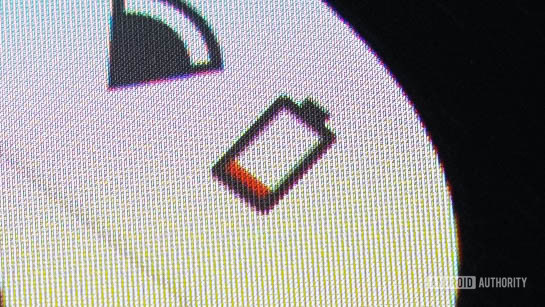Affiliate links on Android Authority may earn us a commission. Learn more.
125W charging is hot but battery tech is adapting, and more tech news today!
Published onJuly 15, 2020

Your tech news digest, by way of the DGiT Daily tech newsletter, for Wednesday, July 15.
1. 125W smartphone charging is here: what it means

If you’re like me, you probably charge your phone at night as you go to bed. Possibly within reach of you while in bed. Plenty of time to reach 100% charge.
But there are times when topping up fast could be handy. And that’s the idea behind Oppo’s new 125W Flash Charge spec being unveiled today.
- What it means, according to OPPO, is just five minutes of plugged-in charging will provide 41% capacity, reaching 100% charge in 20 minutes (for a 4,000mAh battery).
- Meanwhile, other manufacturers like Apple haven’t yet gone beyond more standard fast charging: a new iPhone can hit 50 percent battery in around 30 minutes.
- But there’s more to the story…
125W!
- 125W charging is impressive, no doubt about it.
- But there are good reasons to at least be skeptical of what’s on offer. You can’t just plug in a beefier power adaptor and charge batteries faster without side-effects, or everyone would be doing it.
- In a lithium-ion battery, care must be taken to avoid excess heat, which can hurt both longer-term capacity and performance.
- We’ve all experienced that at some point. An older battery-powered device you’ve owned might still work ok, but has a problematic battery: way shorter lifespan, as early as after 12-18 months of use, as the battery chemically ages. More companies have data on battery charge cycles: if your device has many hundreds of charge cycles, the capacity of the battery will be reduced. Most devices will fall to 90% capacity after 18-24 months, in a normal lifespan.
- That’s why replacing batteries can give devices a new lease of life, and why battery charging management is scrutinized.
What gives?
- Oppo’s engineers know this too, and the company says it’s achieved 125W charging while keeping the phone’s battery under 40°C, which will help offset some battery degradation.
- Generally, keeping your smartphone charging under 35°C has been a rule of thumb.
- To achieve this, OPPO is moving forward with new battery chemistry. Per my colleague Rob Triggs at Android Authority, who was on a call with OPPO about the new tech, “OPPO has made key changes to its smartphone batteries. The dual-cell structure remains but the battery C-rating has doubled from 3C to 6C.
- “The C-rating is essentially how much continuous current a battery can withstand and a general indicator of quality and resistance to overheating at high charge rates.”
- “Oppo’s 125W solution pushes a whopping 12.5A of current into these batteries at its peak, requiring higher quality batteries. Faster charging is also supplied by three charging pumps, boasting up to 98% efficiency, and a six-way multiple-tab battery setup.”
- Higher C-rating batteries are more expensive, and OPPO hasn’t released any detail into the inevitable battery degradation caused by the faster charging. Android Authority has reached out to OPPO for charge cycle numbers.
- Just as OPPO embarks on this, Apple and others are being aggressively careful the other way. Apple’s own battery site explains why it transitioned to trickle charging beyond 80% battery life: “Your Apple lithium-ion battery uses fast charging to quickly reach 80% of its capacity, then switches to slower trickle charging.”
- Is 125W the limit? Probably not, but the wider shift is towards wireless charging with the possible loss of a charging port completely not out of the question.
Also: OPPO hasn’t announced a phone that will ship with this technology yet, nor how much it all costs. It’s unlikely we’ll get much real insight until the next major OPPO flagship phone, possibly in the Ace series.
2. More Lenovo Legion gaming phone specs spill in retail listing, ahead of July 22 unveiling (Android Authority).
3. Peacock launches today at free and premium tiers: NBCUniversal’s new streaming service (owned by Comcast) has TV shows like Saturday Night Live and The Tonight Show with Jimmy Fallon, plus films from Universal Pictures, Dreamworks Animation, and, The Office, exclusively, (starting Jan. 2021). Because it’s free, it has a chance of being an app many have, but not on Roku or Amazon TV at the moment (Android Authority).
4. 🛍 Google Play Pass news: 150 more games, finally expanding outside the US, new $30 annual subscription (Android Authority).
5. Apple and Ireland win European appeal over multi-billion tax deal. Lots more to come out of this (Engadget).
6. The Best of Android: Mid-2020 — Which phone has the best battery life? (Android Authority).
7. Next-gen game consoles: Sony boosting output of PlayStation 5 to meet demand: 10M PS5s by end 2020, a boost of 50% (Bloomberg). Digging into the tech specs: Microsoft details exactly how the coming Xbox Series X will load 4.8GB/s from memory (Ars Technica).
8. 🚗 German court slams the brakes on Tesla’s bogus ‘Autopilot’ marketing (The Next Web).
9. 🤔 The TikTok War: Ben Thompson argues while TikTok’s data security is problematic, what should truly concern Americans “is the algorithm.” Too good; too opaque. Thoughtful read. (Stratechery).
10. 🐛 Stop what you’re doing and patch the Windows bug that took Microsoft 17 years to fix (Gizmodo).
11. SpaceX gets closer to a private beta of its Starlink internet service (Engadget).
The DGiT Daily delivers a daily email that keeps you ahead of the curve for all tech news, opinions, and links to what’s going down in the planet’s most important field. You get all the context and insight you need, and all with a touch of fun. Plus! Rotating daily fun for each day of the week, like Wednesday Weirdness. Join in!